In Florida, the annual migration of birds is a spectacle of nature’s grandeur. Boasting a rich tapestry of habitats, the state serves as a crucial crossroads for avian travelers.
Here, we delve into the captivating world of migration, spotlighting 15 remarkable bird species that grace Florida’s skies during their awe-inspiring journeys.
From the vibrant hues of warblers to the majestic flights of raptors, these migratory birds play a pivotal role in the state’s ecosystems.
Their passage transforms Florida into a vital hub for avian biodiversity, linking distant breeding and wintering grounds.
As we unfold the wings of these migratory wonders, each species unravels a unique tale of resilience, adaptation, and the interconnectedness of ecosystems.
Join us in exploring the beauty and significance of these feathered voyagers as they navigate the diverse landscapes of the Sunshine State, leaving an indelible mark on Florida’s natural canvas. Stay focused.
15 Popular Migratory Birds in Florida
Let’s discover the enchanting world of migratory birds in Florida, where diverse species embark on remarkable journeys, transforming the state into a seasonal haven.
From endangered warblers to majestic raptors, this exploration unveils the significance of these winged visitors and their impact on Florida’s ecosystems.
1. Kirtland’s Wood Warbler (Setophaga kirtlandii)
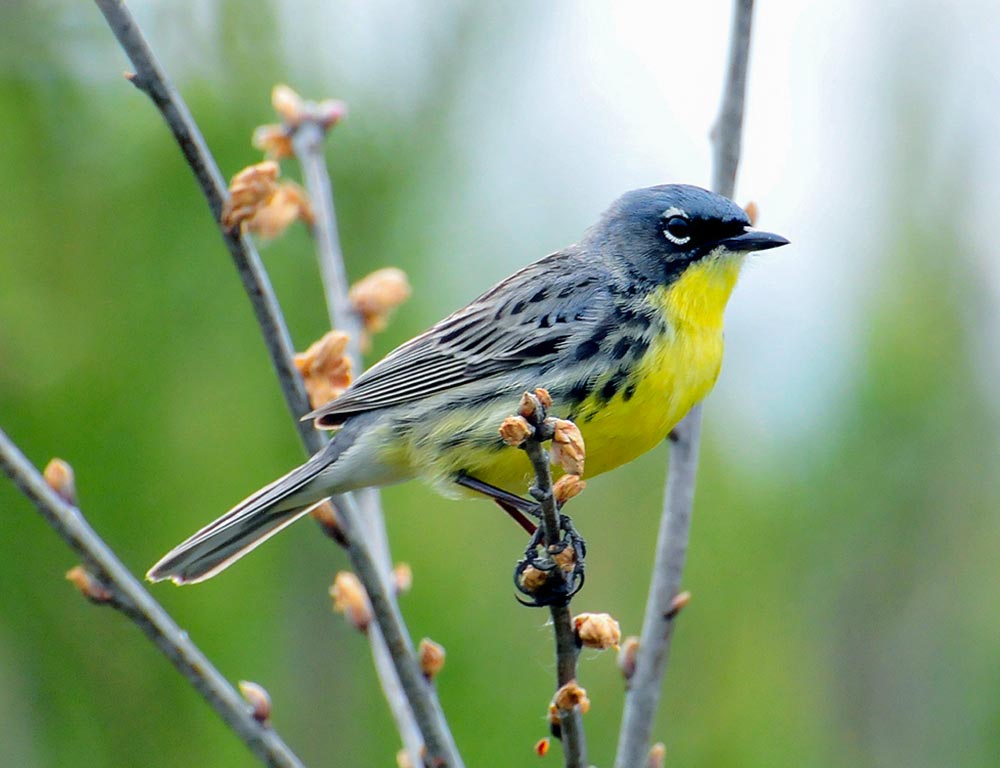
- Scientific name: Setophaga kirtlandii
- Life span: Up to 8 years
- Size: 5.5 to 6 inches
- Weight: Approximately 0.4 ounces
- Wingspan: Around 7.5 to 8.5 inches
- Status: Endangered
- State status: Migratory
Kirtland’s Wood Warbler, an endangered species, migrates to Florida during the winter. These small, vibrant birds showcase a striking bluish-gray coloration with a distinct yellow underbelly.
Their lifestyle revolves around the dense young jack pine forests found in the northern United States and Canada, where they breed during the summer.
In Florida, they seek out scrubby habitats, foraging for insects and spiders. Conservation efforts focus on maintaining their preferred breeding habitat.
2. White-crowned Pigeon (Patagioenas leucocephala)
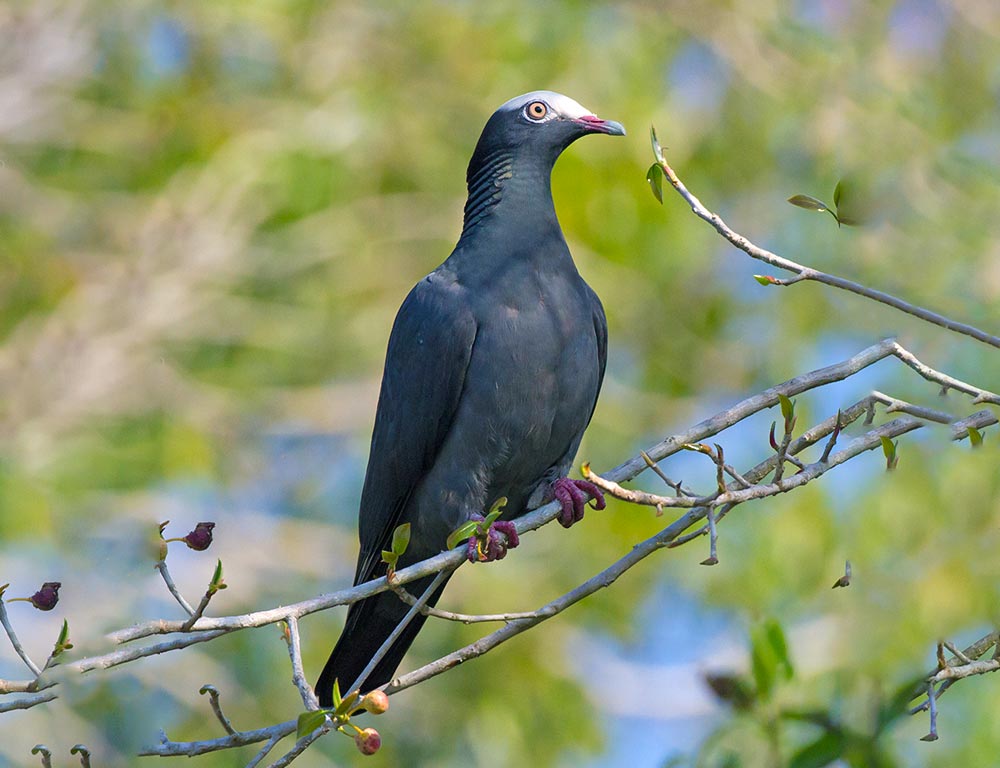
- Scientific name: Patagioenas leucocephala
- Life span: Up to 15 years
- Size: 13 to 15 inches
- Weight: Approximately 8.5 to 13 ounces
- Wingspan: Around 22 inches
- Status: Near Threatened
- State status: Migratory
White-crowned Pigeons migrate to Florida from the Caribbean. These medium-sized birds feature a distinctive white crown contrasting with a dark body.
Their lifestyle involves feeding on fruits, berries, and seeds in tropical and subtropical forests. In Florida, they contribute to seed dispersal and play a crucial role in maintaining ecosystem diversity.
Threats such as habitat loss and hunting have led to their near-threatened status, emphasizing the need for conservation measures.
3. Florida Scrub-Jay (Aphelocoma coerulescens)
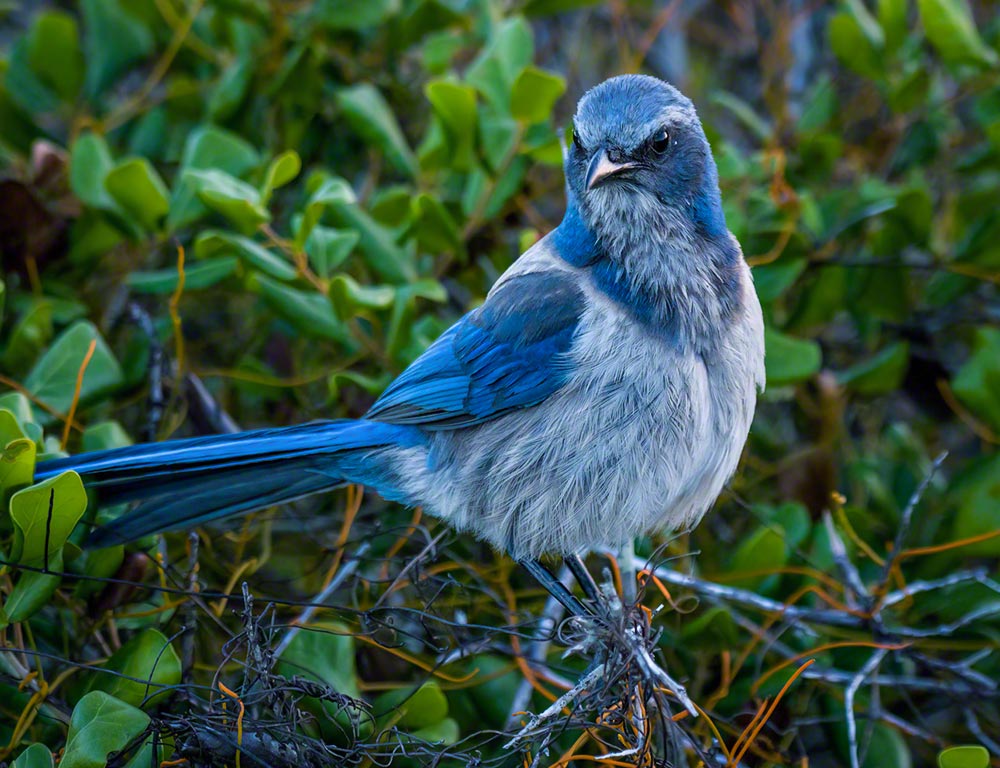
- Scientific name: Aphelocoma coerulescens
- Life span: Up to 9 years
- Size: 11 to 12 inches
- Weight: Approximately 2.5 to 3 ounces
- Wingspan: Around 13 inches
- Status: Threatened
- State status: Resident
Florida Scrub-Jays are unique to Florida and are considered a threatened species due to habitat loss. They inhabit scrubby flatwoods, where they feed on acorns, insects, and small vertebrates.
These social birds live in family groups, exhibiting cooperative breeding behavior. Their charismatic nature and striking blue plumage make them a popular bird for birdwatchers.
Conservation efforts aim to protect and restore their specialized scrub habitat, crucial for their survival.
4. Bald Eagle (Haliaeetus leucocephalus)
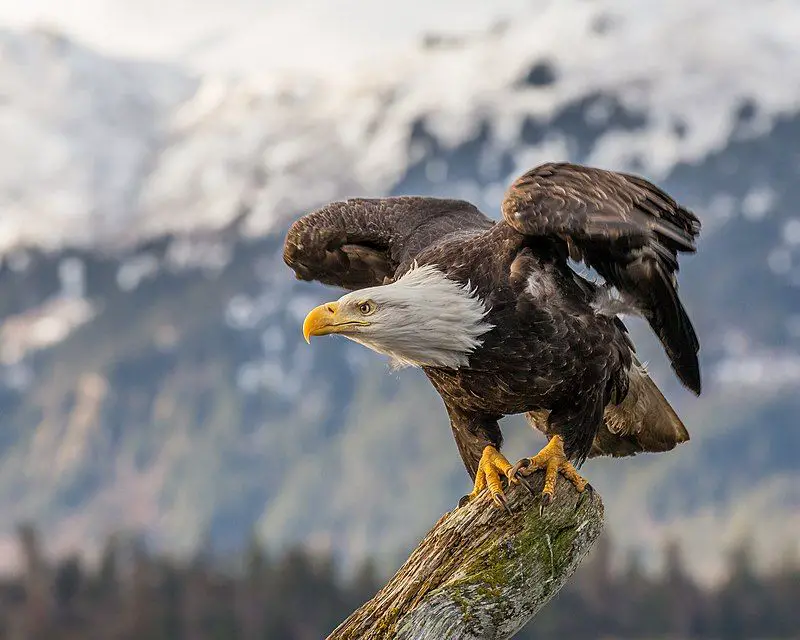
- Scientific name: Haliaeetus leucocephalus
- Life span: Up to 28 years
- Size: 28 to 40 inches
- Weight: Approximately 6.5 to 14 pounds
- Wingspan: Around 6 to 7 feet
- Status: Least Concern
- State status: Resident and migratory
The Bald Eagle is an iconic bird of prey and the national bird and symbol of the United States. Found in Florida year-round, they also see an influx of migratory individuals during the winter.
Known for their impressive nests, these eagles primarily feed on fish, though they exhibit versatility in their diet. Successful conservation efforts, including the ban on DDT, have led to their recovery from endangered status.
Their presence symbolizes environmental health and the importance of habitat conservation.
5. Yellow-rumped Warbler (Setophaga coronata)
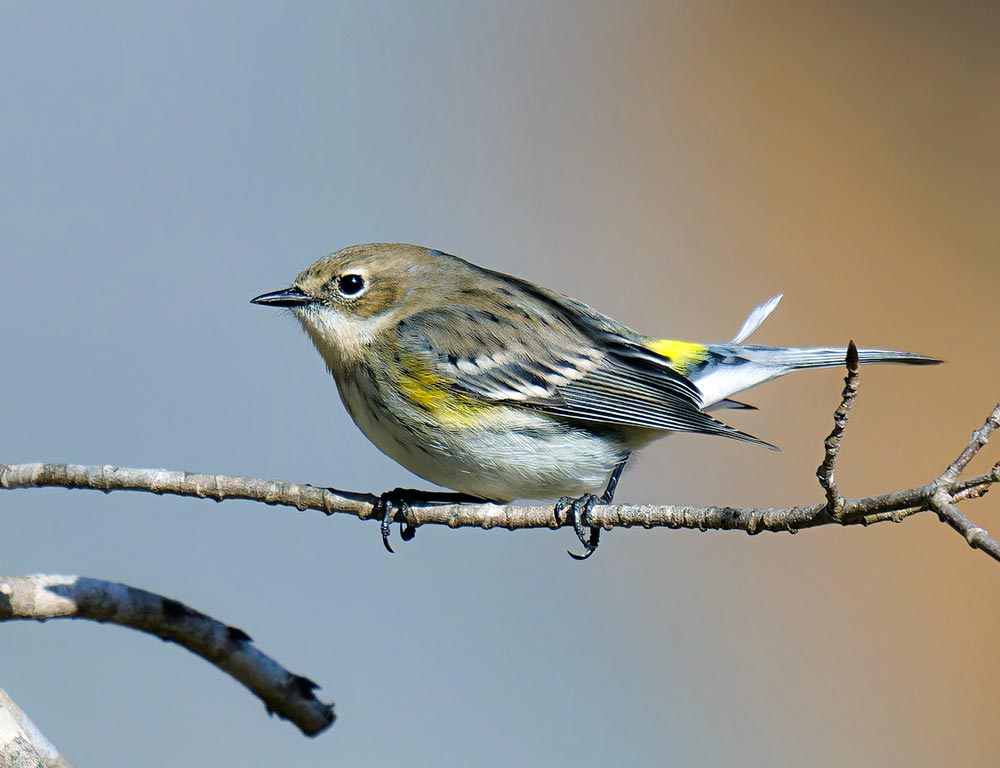
- Scientific name: Setophaga coronata
- Life span: Up to 9 years
- Size: 5 to 6 inches
- Weight: Approximately 0.4 to 0.6 ounces
- Wingspan: Around 7.5 to 9 inches
- Status: Least Concern
- State status: Migratory
Yellow-rumped Warblers migrate to Florida during the winter. These small, energetic birds are recognizable by their yellow patches on the rump and sides.
They forage on insects and berries, adapting well to various habitats, including forests, parks, and coastal areas.
Their ability to digest waxes in berries allows them to survive in colder climates. Considered of least concern, these warblers thrive across North America, displaying adaptability to diverse environments.
Their vibrant plumage and varied diet make them a delightful sight for bird enthusiasts in Florida.
6. Blue-gray Gnatcatcher (Polioptila caerulea)
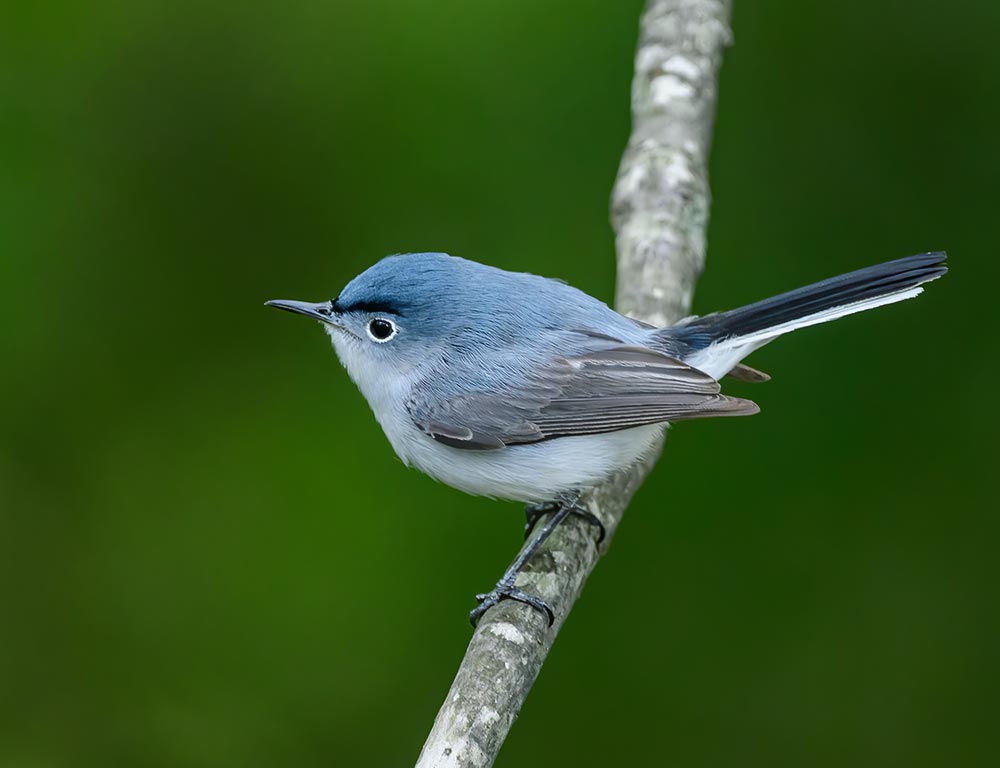
- Scientific name: Polioptila caerulea
- Life span: Up to 7 years
- Size: 4 to 5 inches
- Weight: Approximately 0.2 to 0.4 ounces
- Wingspan: Around 6 to 7 inches
- Status: Least Concern
- State status: Migratory
The Blue-gray Gnatcatcher is a small, insectivorous bird known for its constant, distinctive calls.
Migrating to Florida during the winter, these agile birds with their blue-gray plumage and long tails are often found in open woodlands and scrubby areas.
Their lifestyle involves rapid, acrobatic movements as they catch insects mid-air.
They build intricate, cup-shaped nests on tree branches, showcasing their adaptability to varied environments. Common and adaptable, they contribute to insect control in the ecosystems they inhabit.
7. Palm Warbler (Setophaga palmarum)
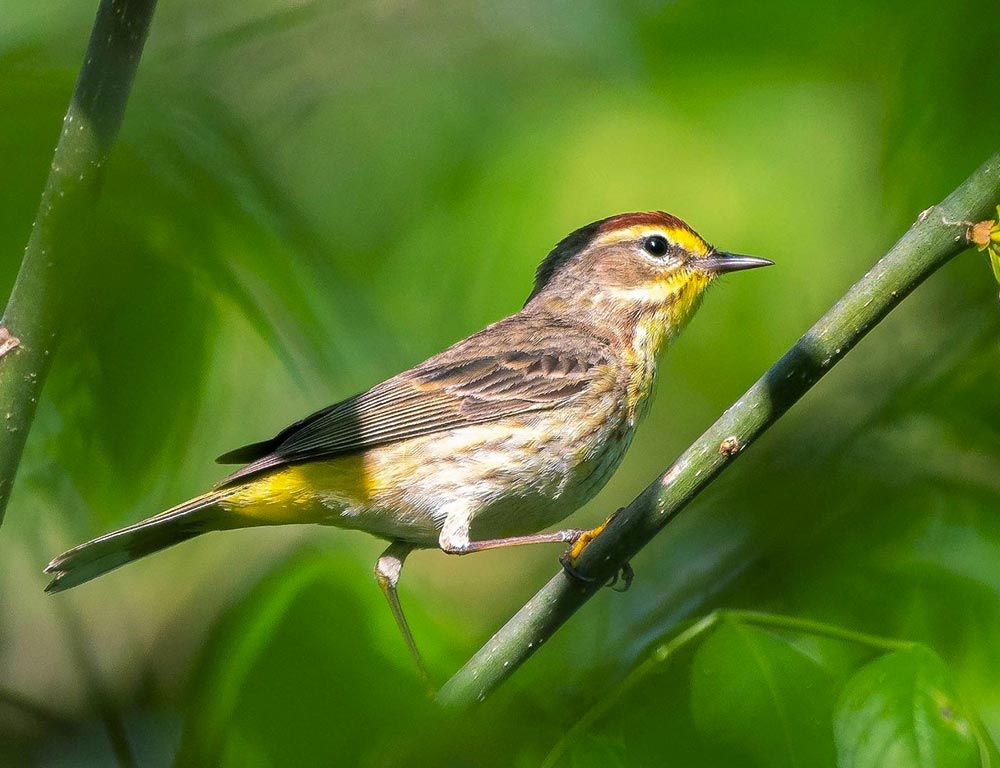
- Scientific name: Setophaga palmarum
- Life span: Up to 7 years
- Size: 4.7 to 5.1 inches
- Weight: Approximately 0.3 to 0.5 ounces
- Wingspan: Around 7.5 to 9 inches
- Status: Least Concern
- State status: Migratory
The Palm Warbler is a migratory bird that winters in Florida. Sporting a distinctively yellow underbelly and constant tail-wagging behavior, they prefer open habitats like grasslands, scrub, and palm groves.
Their lifestyle revolves around foraging on the ground for insects, often using their tail-wagging motion to flush out prey.
These warblers play a vital role in controlling insect populations and contribute to the biodiversity of the areas they inhabit.
8. Black-and-white Warbler (Mniotilta varia)
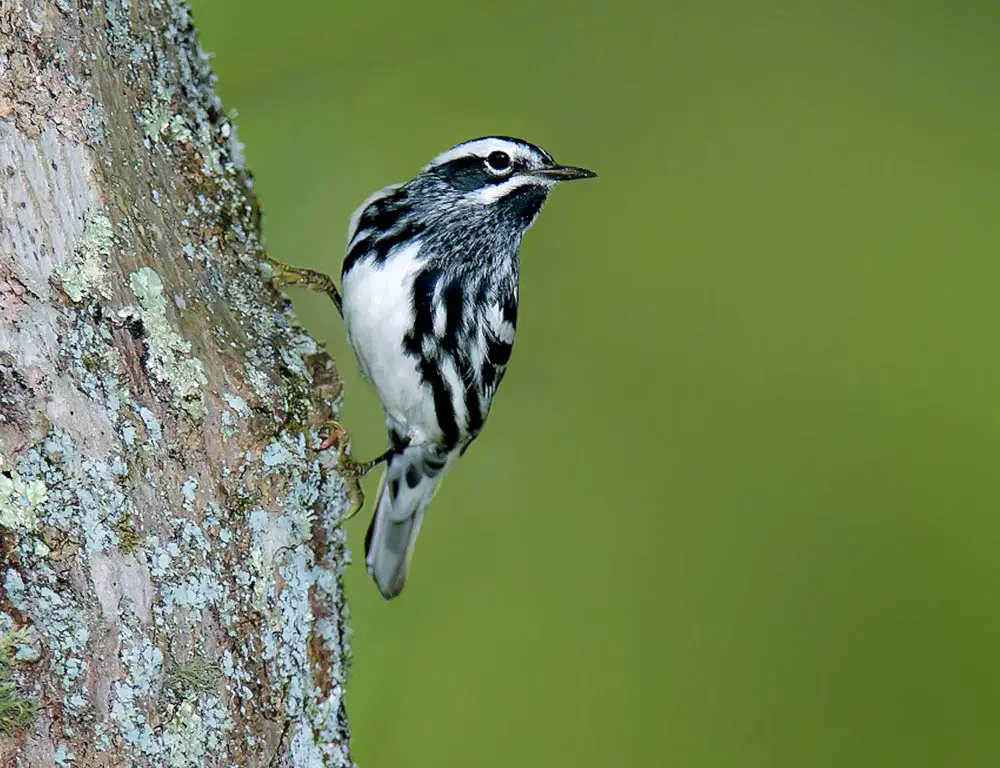
- Scientific name: Mniotilta varia
- Life span: Up to 8 years
- Size: 4.3 to 5.1 inches
- Weight: Approximately 0.3 to 0.4 ounces
- Wingspan: Around 7.5 to 8.7 inches
- Status: Least Concern
- State status: Migratory
The Black-and-white Warbler is a striking bird with its distinctive black-and-white striped plumage.
Migrating to Florida during the winter, they are often found in mature forests, particularly favoring areas with abundant insect prey.
Their lifestyle involves creeping along tree trunks and branches, gleaning insects from the bark.
This unique foraging behavior sets them apart from other warblers. Their adaptability to various forest types and their role in insect control make them valuable contributors to ecosystem health.
9. American Red-eyed Vireo (Vireo olivaceus)
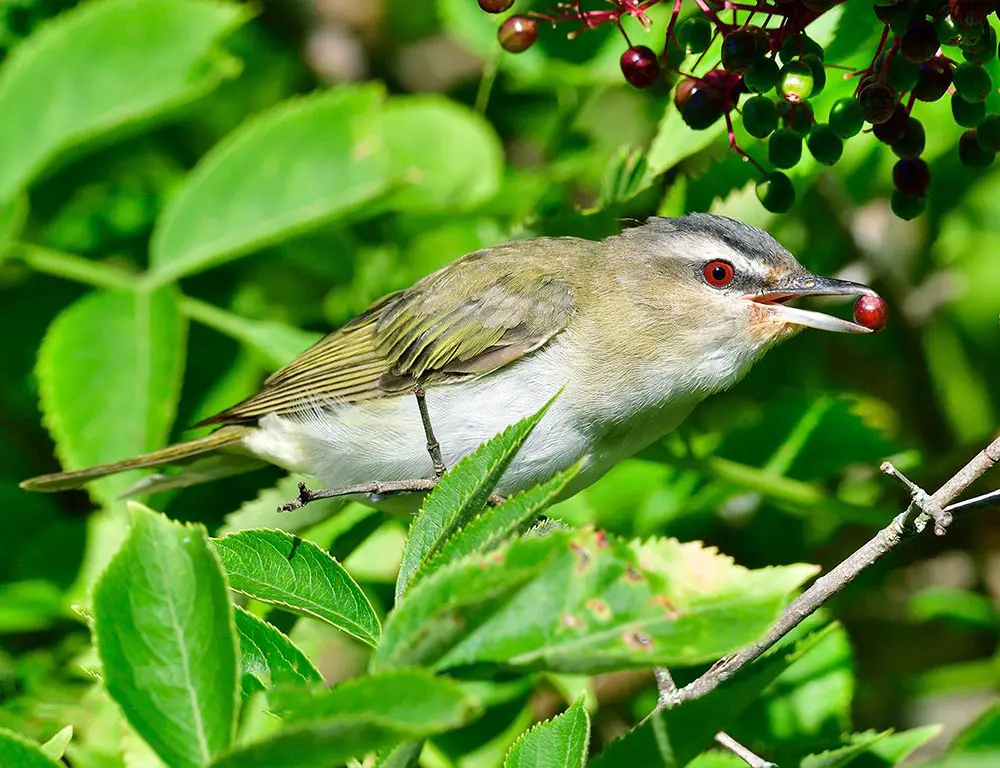
- Scientific name: Vireo olivaceus
- Life span: Up to 10 years
- Size: 5 to 6 inches
- Weight: Approximately 0.4 to 0.7 ounces
- Wingspan: Around 9 inches
- Status: Least Concern
- State status: Migratory
The American Red-eyed Vireo is a migratory bird that visits Florida during the breeding season.
Identified by their red eyes and olive-green plumage, they inhabit various wooded habitats, where they forage for insects.
Their lifestyle involves constant singing, making them more often heard than seen.
These videos play a role in controlling insect populations, contributing to the ecological balance of the ecosystems they inhabit.
10. Warbling Violet-ear (Violet-earned Thrush, Ixoreus exilis)
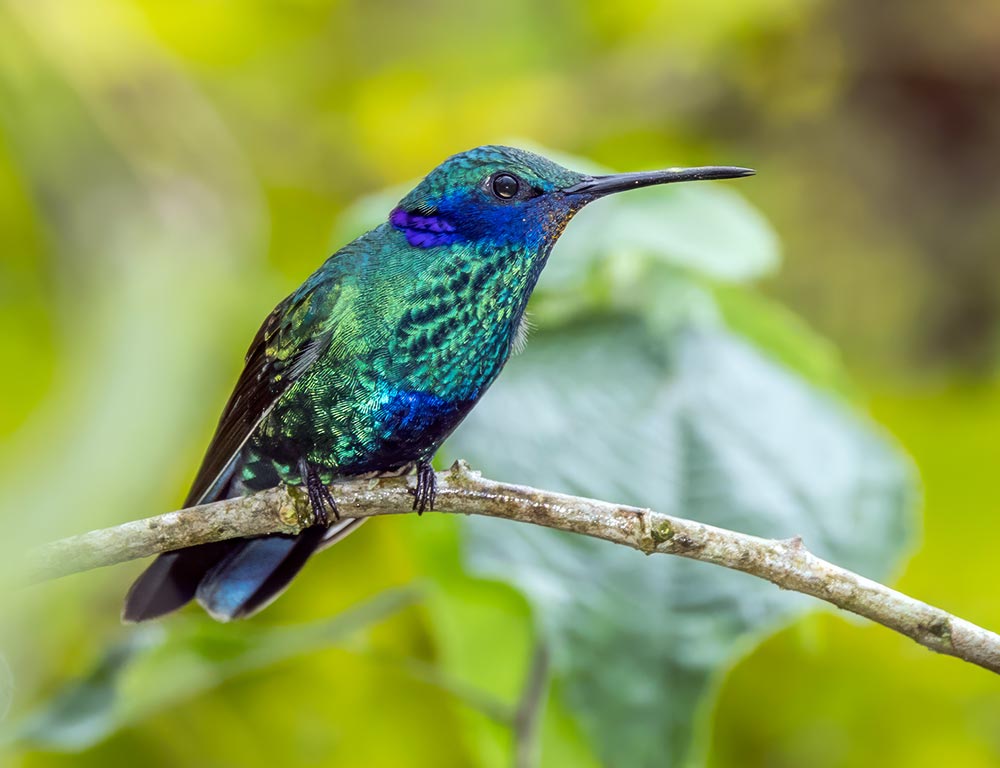
- Scientific name: Ixoreus exilis
- Life span: Up to 6 years
- Size: 8 to 10 inches
- Weight: Approximately 2.1 to 3.1 ounces
- Wingspan: Around 14 to 16 inches
- Status: Least Concern
- State status: Migratory
The Warbling Violet-ear, also known as the Violet-earned Thrush, is a migratory bird that visits Florida during the winter.
With their striking violet ear patches and brown plumage, they are often found in wooded areas, feeding on insects, berries, and seeds.
Their melodious song adds to the natural soundscape, enhancing the biodiversity of the habitats they frequent.
Although not as common as some other migratory species, their presence contributes to the overall avian diversity in Florida’s ecosystems.
11. Northern Mockingbird (Mimus polyglottis)
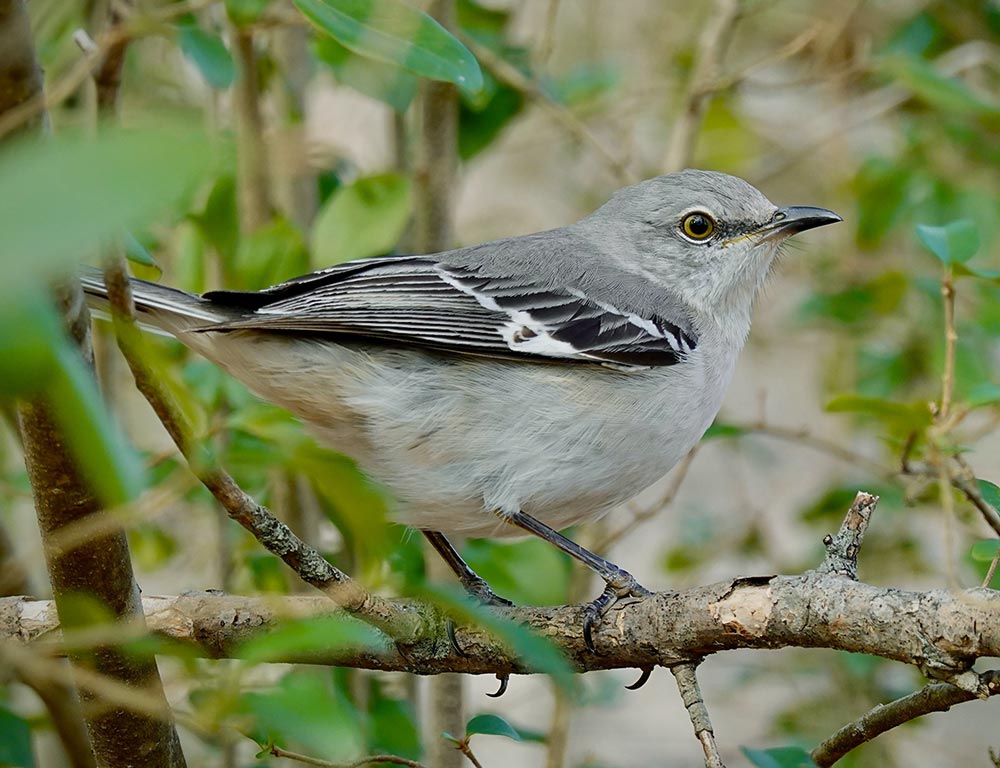
- Scientific name: Mimus polyglottis
- Life span: Up to 8 years
- Size: 9 to 11 inches
- Weight: Approximately 1.6 to 2 ounces
- Wingspan: Around 12 to 15 inches
- Status: Least Concern
- State status: Resident
The Northern Mockingbird is a versatile and highly adaptable resident bird in Florida. Known for its exceptional mimicry skills, it imitates the songs of various other bird species and even mechanical sounds.
With their gray and white plumage and long tails, these birds are commonly found in urban and suburban areas, where they forage for insects and fruits.
Their lifestyle involves defending their territory vigorously and singing from prominent perches, making them a familiar and beloved part of Florida’s avian landscape.
12. Blue Jay (Cyanocitta cristata)
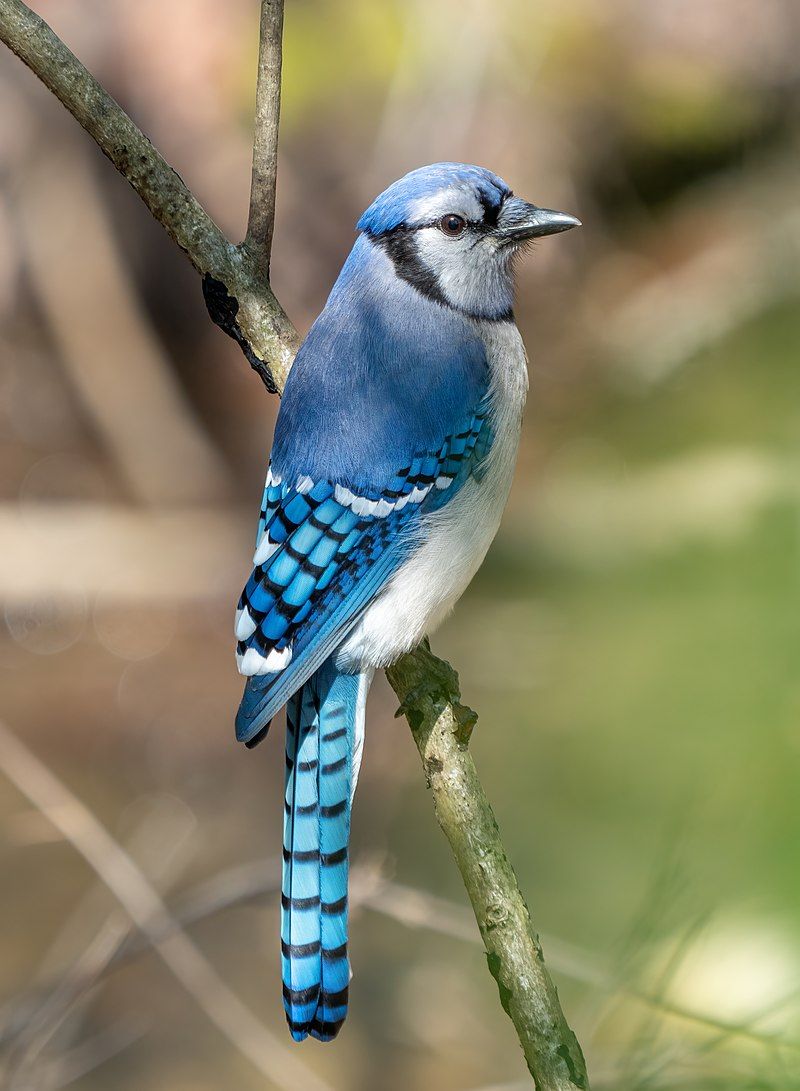
- Scientific name: Cyanocitta cristata
- Life span: Up to 7 years
- Size: 9 to 12 inches
- Weight: Approximately 2.5 to 3.5 ounces
- Wingspan: Around 13 to 17 inches
- Status: Least Concern
- State status: Resident
The Blue Jay is a striking bird with its blue and white plumage, black markings, and distinctive crest.
Resident in Florida year-round, these intelligent birds are often found in a variety of habitats, including forests, parks, and urban areas.
Their lifestyle involves a varied diet of seeds, nuts, insects, and even small vertebrates.
Blue Jays are known for their bold and assertive behavior, and they play a role in seed dispersal as they cache acorns and other food items.
13. Northern Cardinal (Cardinalis cardinalis)

- Scientific name: Cardinalis cardinalis
- Life span: Up to 15 years
- Size: 8 to 9 inches
- Weight: Approximately 1.5 to 1.7 ounces
- Wingspan: Around 10 to 12 inches
- Status: Least Concern
- State status: Resident
The Northern Cardinal is a familiar and colorful resident bird in Florida. With its brilliant red plumage (males) and brownish-gray (females), they are easily identifiable.
These birds are often found in a variety of habitats, including gardens and wooded areas. Their lifestyle involves a diet of seeds, fruits, and insects.
Known for their sweet, whistling songs, Cardinals are monogamous and defend their territories, making them a common and cherished sight in Florida’s backyards.
14. Red-tailed Hawk (Buteo jamaicensis)
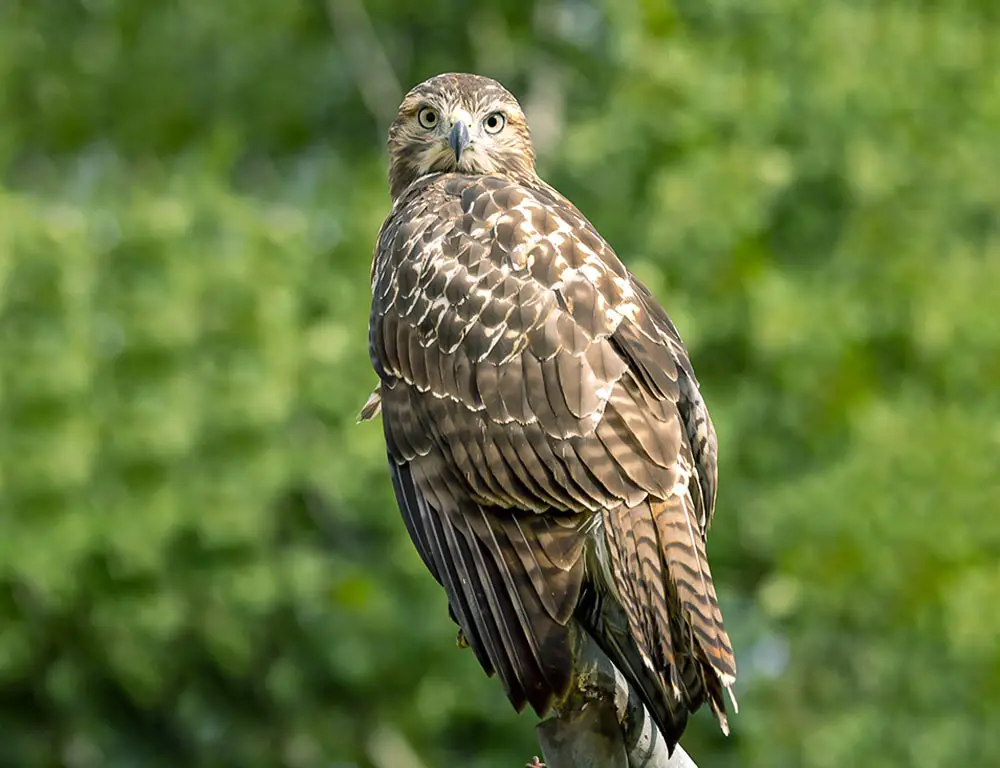
- Scientific name: Buteo jamaicensis
- Life span: Up to 21 years
- Size: 18 to 26 inches
- Weight: Approximately 2 to 4 pounds
- Wingspan: Around 43 to 57 inches
- Status: Least Concern
- State status: Resident and migratory
The Red-tailed Hawk is a large raptor that can be found in Florida both as a resident and migratory species.
Identified by their broad wings and characteristic red tail (in adults), these hawks inhabit a variety of environments, from open fields to forests.
Their lifestyle revolves around hunting small mammals, birds, and occasionally snakes, using their keen eyesight to spot prey from high perches.
Red-tailed Hawks play a vital role in controlling rodent populations, contributing to the ecological balance in the areas they inhabit.
15. Osprey (Pandion haliaetus)
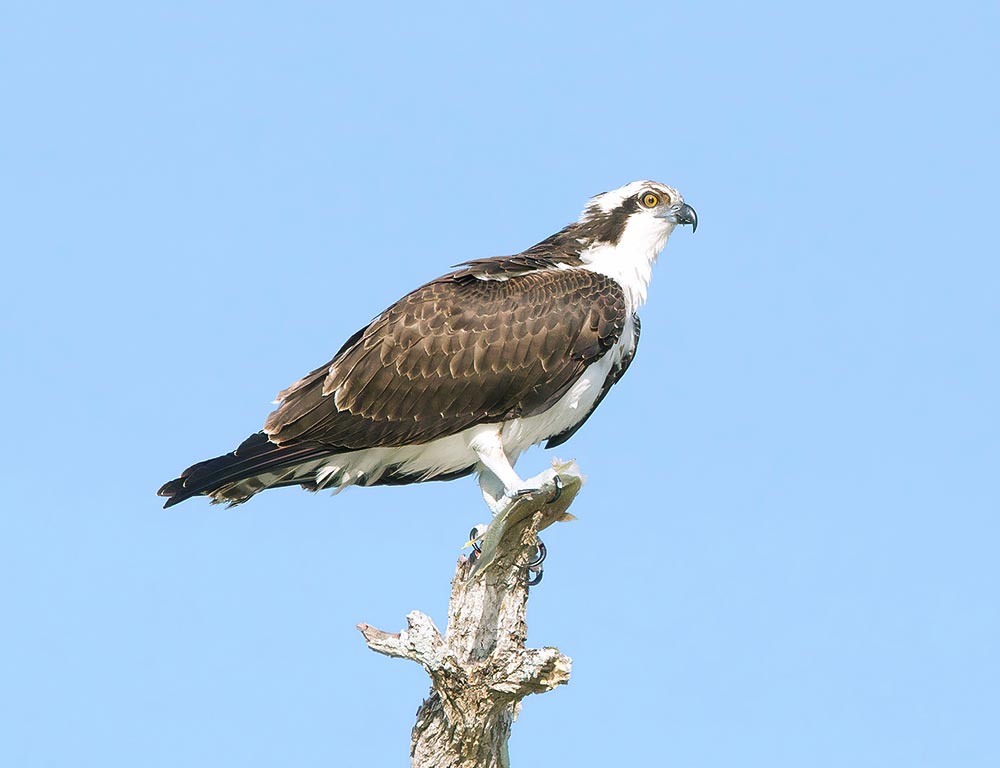
- Scientific name: Pandion haliaetus
- Life span: Up to 25 years
- Size: 21 to 24 inches
- Weight: Approximately 2.5 to 4.5 pounds
- Wingspan: Around 54 to 72 inches
- Status: Least Concern
- State status: Resident and migratory
The Osprey is a magnificent raptor that can be found in Florida both as a resident and migratory species.
Recognizable by its distinctive black eye stripe and white head, these birds of prey are often seen near bodies of water, where they hunt fish.
Their lifestyle involves building large stick nests on elevated structures, including artificial platforms.
Ospreys are powerful divers, using their sharp talons to catch fish and contributing to the health of aquatic ecosystems in Florida.
Wrapping Up
The diverse array of migratory birds in Florida enriches the state’s ecosystems and captivates bird enthusiasts.
From the endangered Kirtland’s Wood Warbler to the resilient Northern Mockingbird, each species plays a unique role in maintaining ecological balance.
Florida’s varied habitats, ranging from scrublands to urban areas, provide crucial stopover points for these migratory wonders.
Conservation efforts are paramount to ensure the continued survival of endangered and threatened species, emphasizing the need to protect and restore their habitats.
The interplay between resident and migratory birds contributes to the state’s biodiversity, making Florida a vital hotspot for avian enthusiasts and wildlife conservationists alike. Best of luck.